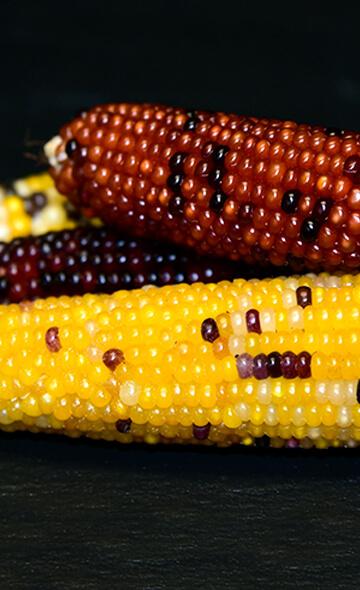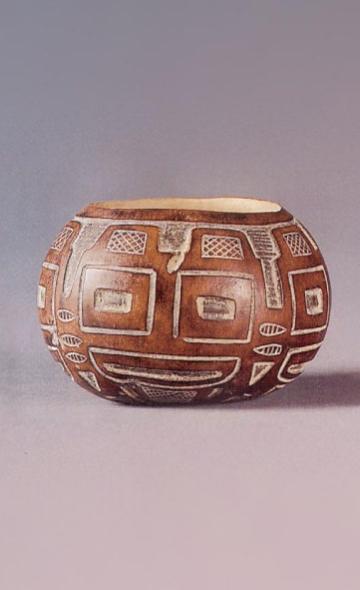- Visitors
- Researchers
- Students
- Community
- Information for the tourist
- Hours and fees
- How to get?
- Virtual tours
- Classic route
- Mystical route
- Specialized route
- Site museum
- Know the town
- Cultural Spaces
- Cao Museum
- Huaca Cao Viejo
- Huaca Prieta
- Huaca Cortada
- Ceremonial Well
- Walls
- Play at home
- Puzzle
- Trivia
- Memorize
- Crosswords
- Alphabet soup
- Crafts
- Pac-Man Moche
- Workshops and Inventory
- Micro-workshops
- Collections inventory
- News
- Researchers
- Andean Foods Series: Corn
News
CategoriesSelect the category you want to see:

International academic cooperation between the Wiese Foundation and Universidad Federal de Mato Grosso do Sul ...

Clothing at El Brujo: footwear ...
To receive new news.
Por: Leslie Zúñiga y José Alva
By Leslie Zúñiga and José Alva
“There are many differences kinds of corn; because, firstly, it comes in all colors: white, black and yellow, purple, light and dark red and with several mixed colors“. (COBO 1964 [1656]: 160)
Corn is the native cereal of the American continent. With the Spanish colonization and the globalization of the economies, corn was taken to every corner of the world and integrated progressively into the diet in China, India and the countries of Europe. In the following lines, we shall review rapidly the history of corn in Peru, its consumption in Peruvian cuisine and its nutritional values.
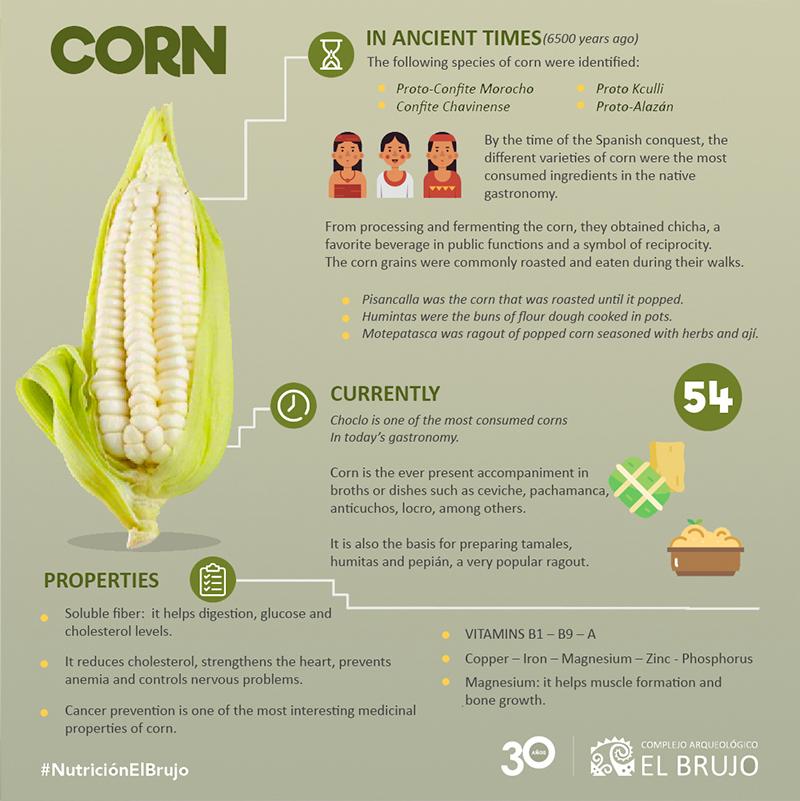
A Brief History
In the XVII century, chronicler Bernabé Cobo detailed that in the “New World” there was a great variety of species of corn, which grew on the different altitudinal floors and climates of the Andes and Mesoamerica. In spite of that, was in the lands with warm climate that the plants of certain species of corn reached their tallest size. [1]
This diversity of corns observed by Cobo had its origins several millennia back in time, closely linked to the process of sedentarization of Amerindian populations. Throughout decades of study, Peruvian archaeologist Duccio Bonavia sustained that the Andes were a center of domestication of corn independent from Mesoamerica, since the species found in our region are different from those recorded north of the continent. [2]
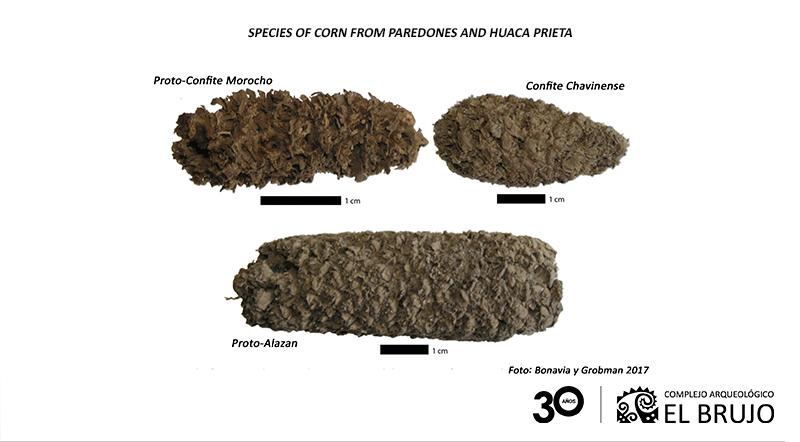
Huaca Prieta, a site located in the southernmost part of the El Brujo Archaeological Complex, has the most ancient remains of corn in the Andes, with samples dating back to 6500 years. Since then, and in its subsequent pre-ceramic occupations, the following species of corn were identified: Proto-Confite Morocho, Confite Chavinense, Proto Kculli and Proto-Alazán. [3]
By the times of the Spanish conquest of the Andes, the different species of corn were the most consumed ingredients in the native gastronomy. For example, from the processing and fermentation of corn they obtained chichi, a favorite drink in public functions and a symbol of reciprocity. Furthermore, the corn grains were commonly roasted and eaten during their walks. Pisancalla was the corn that was roasted until it popped. Humintas were the buns made from flour dough cooked in pots. Motepatasca the ragout made with popped corn seasoned with herbs and ají. [4]
Thus, the prolonged history of social dynamics that took place in our territory has led to Peru having currently more than 54 species of corn, distributed with a notable scope. Choclo, with soft grains and of a whit and milky color, is one of the corns that are most widely consumed in today’s gastronomy.
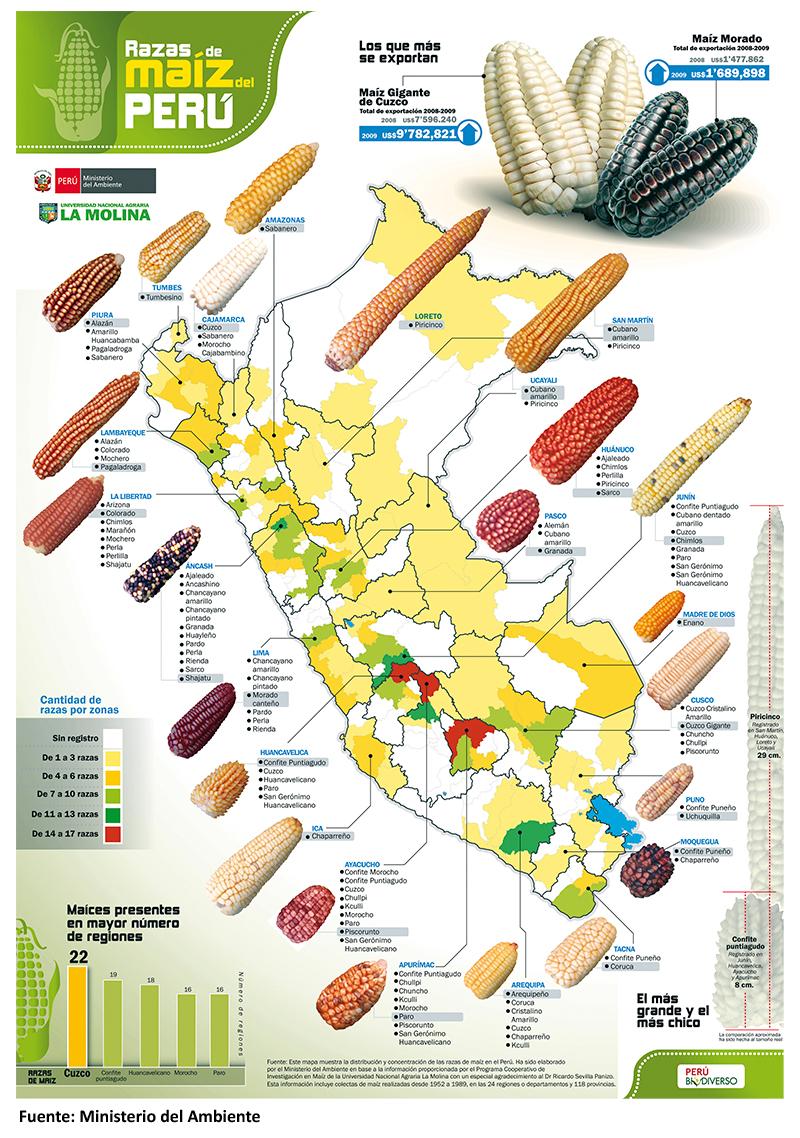
Accompaniment or main ingredient of Peruvian gastronomy?
The answer is: both. But it is important to take into account that though corn has a high proportion of proteins, it does not contain the necessary amino acids for its adequate assimilation in the body. Hence, it is important to accompany it with other foods that complement it. [5]
There is no doubt that it is the ever-present accompaniment in broths or emblematic dishes such as ceviche, pachamanca, anticuchos, locro, arroz con pollo, among others. It is also the basis for preparing garnishes such as tamales, humitas and pepián, a quite popular ragout.
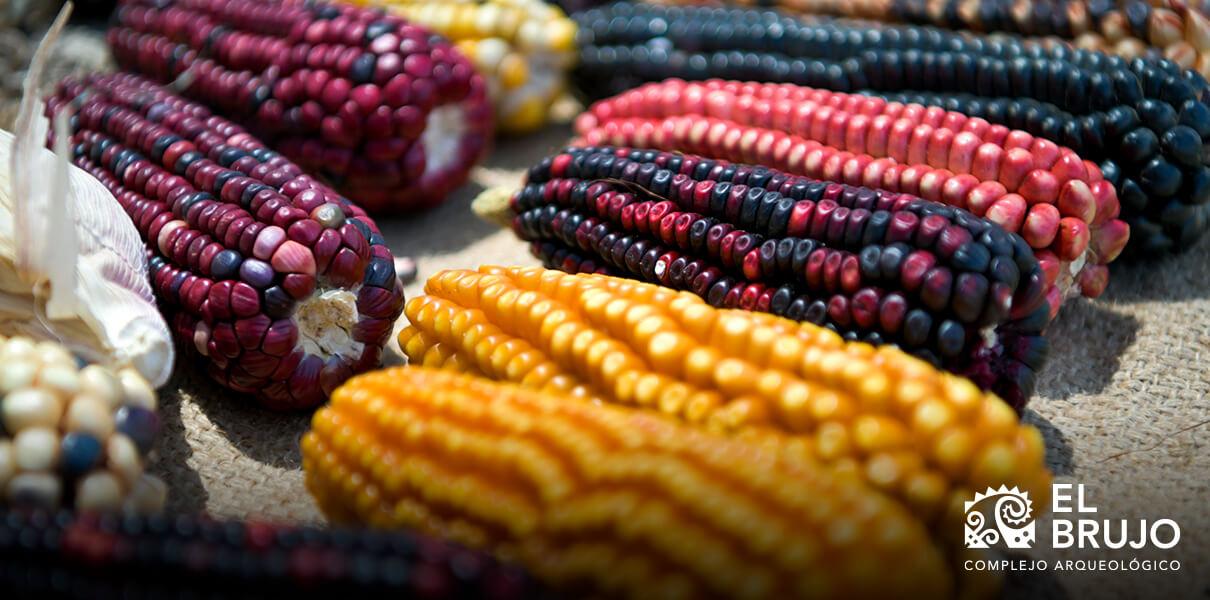
Nutritional value and medicinal properties of corn
Corn is very rich in vitamins of group B, among which the following stand out: vitamin B1, which transforms energy into glucose; and vitamin B9, or folic acid, important for the formation of the fetus. It also has vitamin A, which helps the skin and eyesight. It is also rich in minerals such as: copper, iron, magnesium, zinc and phosphorous, and it has traces of manganese, which helps muscle formation and bone growth. Moreover, it has a great percentage of soluble fiber, whose consumption helps regulate digestion, glucose and the levels of cholesterol in the body [7].
Cancer prevention is one of the most interesting medicinal properties, since its antioxidants act in the elimination of free radicals (the main cause for the appearance of cancer cells [6]). And that is not all, corn also reduces cholesterol, strengthens the heart and helps prevent anemia and controls nervous problems. [7]
Researchers , outstanding news


